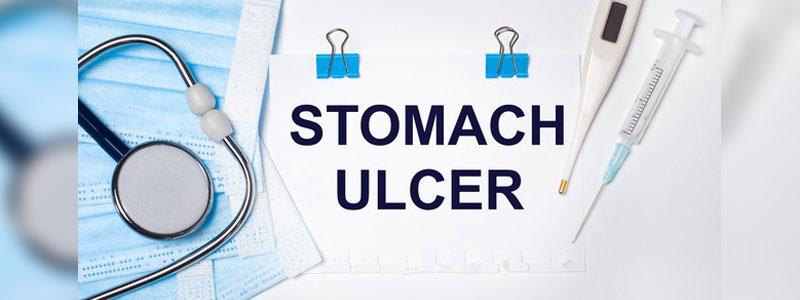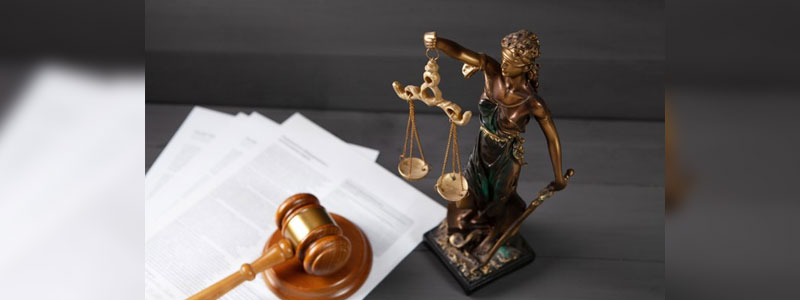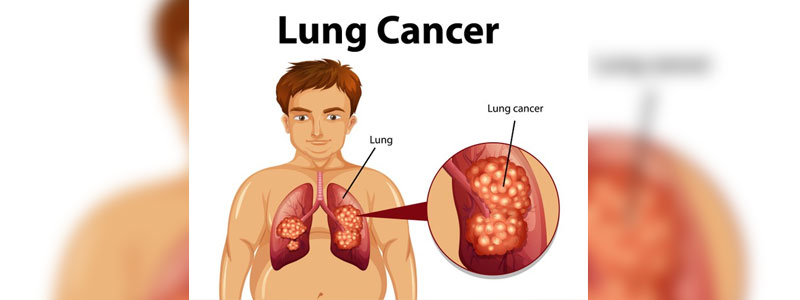Zantac Lawsuits: “In Extremis” Depositions Protocol Outlined

Last week, U.S. District Judge Robin L. Rosenberg, overseeing the federal multidistrict Zantac litigation, issued a pretrial order indicating that protocol for “In Extremis” depositions has been established for preserving the testimony of plaintiffs suffering from extreme health problems, who may not survive to see their cancer claims reach a courtroom.
Zantac (ranitidine hydrochloride) is an antacid and an H2 (histamine-2) receptor blocker used for treating and preventing ulcers in the duodenum, stomach, and intestines. It is also used for treating erosive esophagitis, heartburn, gastroesophageal reflux disease-GERD, Zollinger-Ellison syndrome. In 1983, Glaxo Holdings Ltd, a company which is a part of GlaxoSmithKline PLC, received approval from the FDA to sell Zantac in the U.S. However, owing to patent expiry in 1987 in the United States, Glaxo had to face stiff competition by the generic alternatives launched immediately by competitors. Since 2017, the OTC version of Zantac was marketed by Sanofi in the United States and Canada. In 2004, Pfizer gained FDA approval to sell the Zantac OTC in the United States.
According to the pretrial order, a plaintiff will be considered “In Extremis” based on medical evidence or affidavits by a physician or the plaintiff, if he/she:
-
Has reached, or is expected to reach within the next six months, the state or condition of being no longer capable of testifying competently in a deposition.
-
Is not expected to survive beyond the next twelve months.
The plaintiff must provide the following documents to the defense counsel at least thirty days before the in extremis deposition:
-
Any available medical records within the plaintiff’s possession that are not already produced to Defendants.
-
Any available records within the plaintiff’s possession relating to damages claims.
-
A completed version of any plaintiff Fact Sheet, standard interrogatories, or other written discovery that plaintiffs are required to produce in this litigation, including any documents required to be produced therewith, if not already provided to Defendants.
-
Executed records authorizations and documents required by any Order in this litigation or by any of the plaintiff’s medical providers.
Last month, in a Q3 report, Sanofi-Aventis US LLC and GlaxoSmithKline LLC indicated that they are facing a probe by the U.S. Department of Justice (DOJ) over the heartburn drug.
The DOJ will be investigating whether the drug makers knew about the presence of the known carcinogenic chemical byproduct N-nitrosodimethylamine (NDMA) in Zantac and still failed to adequately inform regulators about the potential risks. It will also look into when the manufacturers discovered that the main ingredient in the recalled heartburn drug causes cancer.
Currently, about 300 Zantac lawsuits are pending in the Southern District of Florida. The lawsuits are consolidated and centralized under MDL No: 2924, for coordinated discovery and pretrial proceedings.
Calif. Jury Deliberating First All-Zoom $70M Asbestos Case

On Monday, a former car dealership maintenance worker and his wife urged a California jury to award them $70 million over his cancer claims against Honeywell and other asbestos product manufacturers and dealers. Honeywell, in closing arguments in California’s first all-Zoom jury trial, said that the lawsuit lacks evidence, and the worker was genetically predisposed to cancer.
The man worked as a janitor at three car dealerships between 1991 and 1997. The lawsuit claims that he was exposed to asbestos dust from Bendix brake pads when he swept and mopped the floors. The brake pads were manufactured by Bendix Corp., a brand for which Honeywell bears liability because of corporate succession. The suit further claims that he was never warned about asbestos or was made aware of specific ways to clean to avoid asbestos exposure.
The couple is seeking $60 million for past and future expenses, including $1 for his suffering due to mesothelioma, and $10 million for loss of consortium.
Peter C. Beirne of the Paul Law Firm, the attorney representing the couple, stated that the plaintiff has major surgery coming up, and the chances of him living more than five years are thin. Beirne urged the jury to find Honeywell liable for the bulk of the four negligence, strict liability, and failure to warn claims and to conclude that ACDelco, GM, and the dealerships bear between 2% and 10% liability.
David R. Ongaro of Ongaro PC, an attorney for Honeywell, claimed that there is no proof the dealerships used Bendix brake pads containing asbestos, as Bendix stopped the use of asbestos brake pads in 1986, five years before the plaintiff began working. Ongaro also noted that several epidemiology studies indicate that motor vehicle mechanics and individuals working with brake pads aren't at a higher risk of mesothelioma.
The parties presented their closing arguments in the trial that has been proceeding remotely since July 27. Alameda Superior Court Judge Jo-Lynne Lee, after hearing the arguments, said that she would require jurors to deliberate remotely in a Zoom breakout room after speaking with courthouse personnel about the availability of courtrooms for in-person deliberations.
In the U.S., the earliest known asbestos-related lawsuit was filed by a woman in 1929 in the Newark (NJ) Federal Court. Along with her, at least 15 other individuals with asbestos-related claims were trying to get compensation. Unfortunately, the woman's lawsuit was thrown out in 1934, but it brought forth the wave of many such lawsuits. One of the biggest companies targeted by these lawsuits was Johns-Manville Corporation, which filed for bankruptcy in 1982.
Asbestos MDL No. 875 was created in 1991 in the Eastern District of Pennsylvania and is one of the largest and longest-lasting MDL. Till 2011, over 121,000 cases got transferred to this MDL, of which over 108,000 cases were settled, dismissed, or remanded, and around 13,000 are still pending.
Guidance To Prevent NDMA Contamination Issued By FDA

On September 1, the Food and Drug Administration (FDA) issued guidance recommending the manufacturers of active pharmaceutical ingredients and drug products to implement steps to avoid drug contamination with cancer-causing chemical by-products, such as N-nitrosodimethylamine (NDMA) and other nitrosamine impurities.
Federal drug regulators indicate that the recent unexpected finding of nitrosamine impurities that led to massive Zantac, Valsartan, and Metformin recalls made the need for a risk assessment strategy. The recommendations are not legally binding, but a failure to implement them could result in a liability later.
Zantac (ranitidine hydrochloride) is an antacid and an H2 (histamine-2) receptor blocker used for treating and preventing ulcers in the duodenum, stomach, and intestines. It is also used for treating erosive esophagitis, heartburn, gastroesophageal reflux disease-GERD, Zollinger-Ellison syndrome. In 1983, Glaxo Holdings Ltd, a company which is a part of GlaxoSmithKline PLC, received approval from the FDA to sell Zantac in the U.S. However, owing to patent expiry in 1987 in the United States, Glaxo had to face stiff competition by the generic alternatives launched immediately by competitors. Since 2017, the OTC version of Zantac was marketed by Sanofi in the United States and Canada. In 2004, Pfizer gained FDA approval to sell the Zantac OTC in the United States.
Valsartan belongs to a class of drugs called Angiotensin II Receptor Antagonist and is used to treat high blood pressure (Hypertension), and Congestive heart failure. Diovan (Valsartan) was manufactured by Novartis International AG and was approved by the FDA on August 14, 2002. Diovan lost its patent in September 2014. The launch of the generic drug had been on hold since patent expiry due to regulatory problems with the FDA. In 2014, a US-based Ohm Laboratories (Ohm), a subsidiary of Ranbaxy Laboratories, was the first to get the approval from FDA for generic Valsartan. Thereafter, many generic versions of Valsartan came into the market via many other pharma companies.
The guidance has mentioned many potential root causes of contamination, which include acidic reaction conditions, nitrosamine contamination of raw materials used to make active pharmaceutical ingredients, and contamination through recovered solvents and reagents. The contamination can also be caused due to a lack of process optimization and control or through nitrous acid coming in contact with residual amines during the quenching process, as per the FDA.
In a press release issued on the same day, the FDA indicated that nitrosamines are common in water and foods, but its impurities may increase the risk of cancer when exposed to above acceptable levels over a long period of time.
The FDA is working in collaboration with regulatory counterparts around the world in finding and eliminating the drugs with high levels of nitrosamine impurities that are harmful to humans.
Calif.'s First Zoom Asbestos Trial Ends In Defense Verdict

On Thursday, a California jury, who had been deliberating virtually for two days over a $70 million asbestos case, reached a defense verdict for Honeywell at the conclusion.
The lawsuit was brought by a couple, asking the California jury to award them $70 million over the claims that he contracted peritoneal mesothelioma while working as a maintenance worker at three auto dealerships.
According to the Jurors in the California Superior Court for Alameda County, Honeywell proved that it adequately warned Bendix brake pads contained asbestos. The final phase was taken over by Alameda Superior Court Judge Jo-Lynne Lee, who had instructed the jurors on the elements that the plaintiffs should prove to win damages from Honeywell. The elements included that Bendix unit sold brakes to the dealership or they were in GM cars serviced on-site, that they contained asbestos, that Bendix should have warned of the cancer risk, and that asbestos dust from the company’s products was a “substantial factor in causing harm” to the plaintiff. The jurors also noted that the company reasonably relied on General Motors to convey those warnings.
Peter C. Beirne of the Paul Law Firm, the attorney representing the couple, in his final rebuttal argument alleged that Honeywell withheld documents and made it difficult to find those documents. He also pointed to an infamous 1966 letter by a Honeywell executive who said, “if you have enjoyed a good life while working with asbestos products, why not die from it.”
David R. Ongaro of Ongaro PC, an attorney for Honeywell, said that the plaintiffs never proved two points that the car dealership handled asbestos brake pads and they were manufactured by Bendix, even though they presented expert testimony from doctors and an industrial hygienist who said asbestos dust from brake pads could have caused the illness.
The case was the first of two expected verdicts, as Alameda County is pushing trials due to the problems posed by COVID-19.
In the U.S., the earliest known asbestos-related lawsuit was filed by a woman in 1929 in the Newark (NJ) Federal Court. Along with her, at least 15 other individuals with asbestos-related claims were trying to get compensation. Unfortunately, the woman's lawsuit was thrown out in 1934, but it brought forth the wave of many such lawsuits. One of the biggest companies targeted by these lawsuits was Johns-Manville Corporation, which filed for bankruptcy in 1982.
Asbestos MDL No. 875 was created in 1991 in the Eastern District of Pennsylvania and is one of the largest and longest-lasting MDL. Till 2011, over 121,000 cases got transferred to this MDL, of which over 108,000 cases were settled, dismissed, or remanded, and around 13,000 are still pending.
